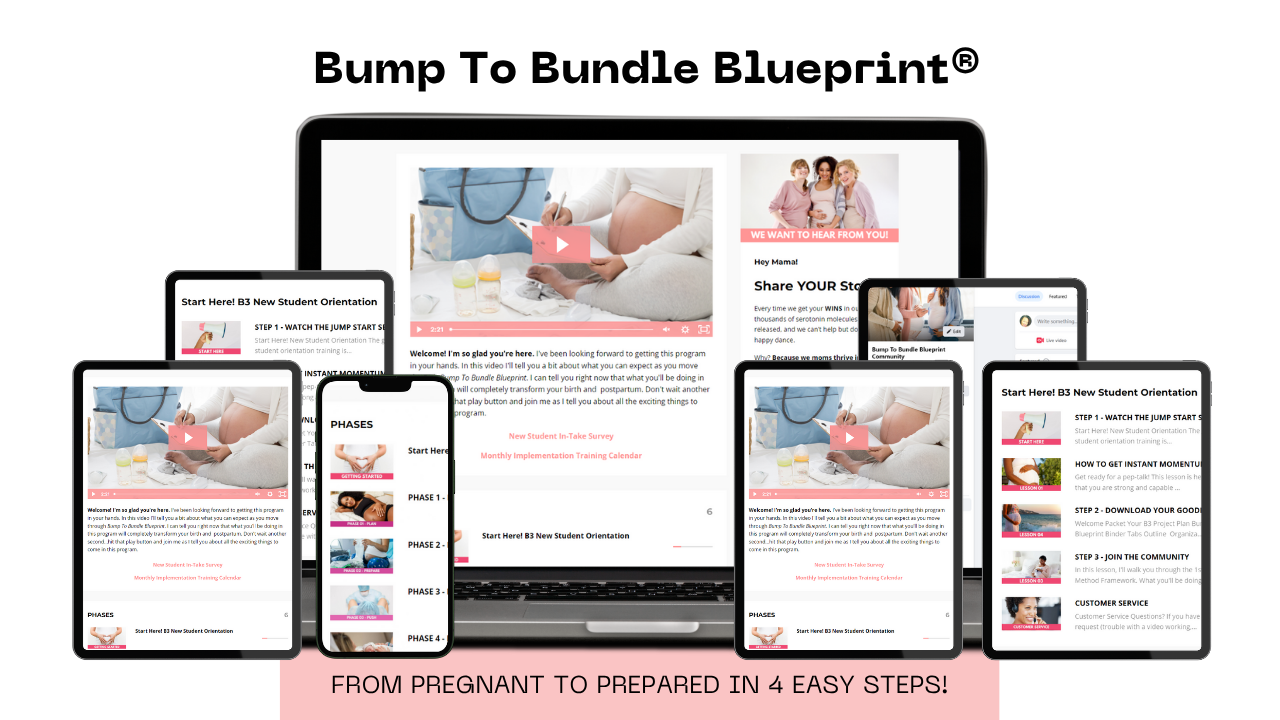37 Weeks Pregnant: What to Expect, Symptoms, and How to Get Ready

You’ve officially made it to 37 weeks pregnant! First of all, congratulations, mama—you’re in the home stretch! But let’s be real… this week can feel both exciting and utterly exhausting. Everyone’s probably asking, “Is the baby here yet?” And while people love to say, “Baby could come any day now,” there’s actually a lot happening with your body and your baby that no one really talks about.
This guide will break down:
-
What’s happening with your baby at 37 weeks
-
Common and surprising pregnancy symptoms
-
How to tell real labor from false labor
-
Practical tips for the next few weeks
-
How to prep for birth and breastfeeding
By the end, you’ll feel more confident and prepared for this final stage of pregnancy.
Is 37 Weeks Considered Full Term?
At 37 weeks, you’re considered early term, not “full term” yet. Full term is actually 39–40 weeks.
Why does this matter? Babies born at 37 weeks often do well, but research shows they may be more likely to:
-
Have feeding difficulties
-
Experience jaundice
-
Require extra support in the first few days
Fun fact: Your baby’s brain is still growing at an amazing rate—about 1% per day. These last couple weeks in the womb are crucial for lung, brain, and immune system development. So even though you’re done being pregnant, these last weeks matter a lot for your baby’s health.
Common (and Weird) Symptoms at 37 Weeks
Pregnancy at 37 weeks is full of surprises. Here’s what’s normal and what you might notice:
-
Lightning crotch: Sudden, sharp pains low down as your baby’s head presses on your pelvis or cervix. Totally normal, but yikes!
-
Nesting instinct: Sudden bursts of energy that make you want to clean, organize, and prep your home for baby.
-
Frequent urination: Baby dropping lower puts pressure on your bladder, so expect lots of bathroom trips.
-
Braxton Hicks contractions: Practice contractions that are irregular, usually painless, and stop with rest or hydration.
Tip: Track your contractions with a free app or journal. Noticing patterns will help you distinguish between false and real labor later.
Real Labor vs. False Labor: How to Tell the Difference
This is where many first-time moms get confused. At 37 weeks, your body is practicing for labor—but how can you tell if it’s the real deal?
False Labor (Braxton Hicks):
-
Irregular timing
-
Usually mild
-
Go away when you move, rest, or drink water
Real Labor:
-
Contractions get closer together and stronger
-
Intensify over time
-
Continue no matter your position or activity
Call your provider immediately if:
-
Your water breaks
-
You have heavy bleeding
-
Baby’s movements decrease suddenly
Knowing the difference can save you stress—and unnecessary trips to the hospital.
Baby’s Development at 37 Weeks
At 37 weeks, your baby is preparing for life outside the womb:
-
Lungs: Almost fully developed, though they continue maturing until week 39
-
Brain: Rapid growth—about 1% per day
-
Body fat: Increasing, helping with temperature regulation after birth
-
Movements: You may notice less space for big kicks, but rolling and stretching are still normal
Fun fact: By 37 weeks, most babies have descended into the pelvis, a process called “lightening.” This can ease your breathing but increase pressure on your bladder.
Practical Tips for These Last Weeks
Here’s what you can do NOW to prep for birth, postpartum, and breastfeeding:
-
Pack your hospital bag
Include snacks, comfy clothes, nursing bras, chargers, and a robe. Don’t forget essentials for baby, like clothes, diapers, and a car seat! -
Practice labor positions
Upright positions—hands and knees, squats, leaning forward—can help labor progress and make baby’s descent smoother. -
Perineal massage
Evidence shows this can reduce the risk of tearing during birth. Start gently, with clean hands and lubrication. -
Plan for the “golden hour”
The first hour after birth is critical for bonding and breastfeeding. Skin-to-skin contact and early latching can make breastfeeding easier and more successful. -
Know your provider’s induction policy
Ask questions like: “When is induction medically necessary?” It’s important to understand your options before labor begins.
Breastfeeding Prep at 37 Weeks
Getting a head start on breastfeeding can save you stress later:
-
Colostrum harvesting – Some moms hand-express a little colostrum and freeze it (with provider approval) for extra support after birth
-
Skip nipple prep myths – No creams or scrubbing needed; your body is naturally preparing
-
Save your support contacts – Have a lactation consultant’s number ready for the first week postpartum
Tip: Even if you plan to exclusively breastfeed, knowing a few hand-expression techniques can be a lifesaver if baby struggles with latch early on.
Mindset Shift for the Last Weeks
37 weeks can feel long, uncomfortable, and stressful. Instead of counting down the days, try counting up the things you’re doing to prepare: meals you cook, bags you pack, and rest you take. Every small action is part of your baby’s journey into the world.
These last weeks of pregnancy are a mix of excitement, discomfort, and anticipation. By knowing what’s happening with your body and your baby, understanding labor signs, and prepping for birth and breastfeeding, you can enter labor feeling empowered and ready.
Want to feel even more prepared? Check out my Bump To Bundle Blueprint—my step-by-step course that guides you through birth prep, postpartum recovery, and breastfeeding basics so you can stop Googling and start feeling confident.



